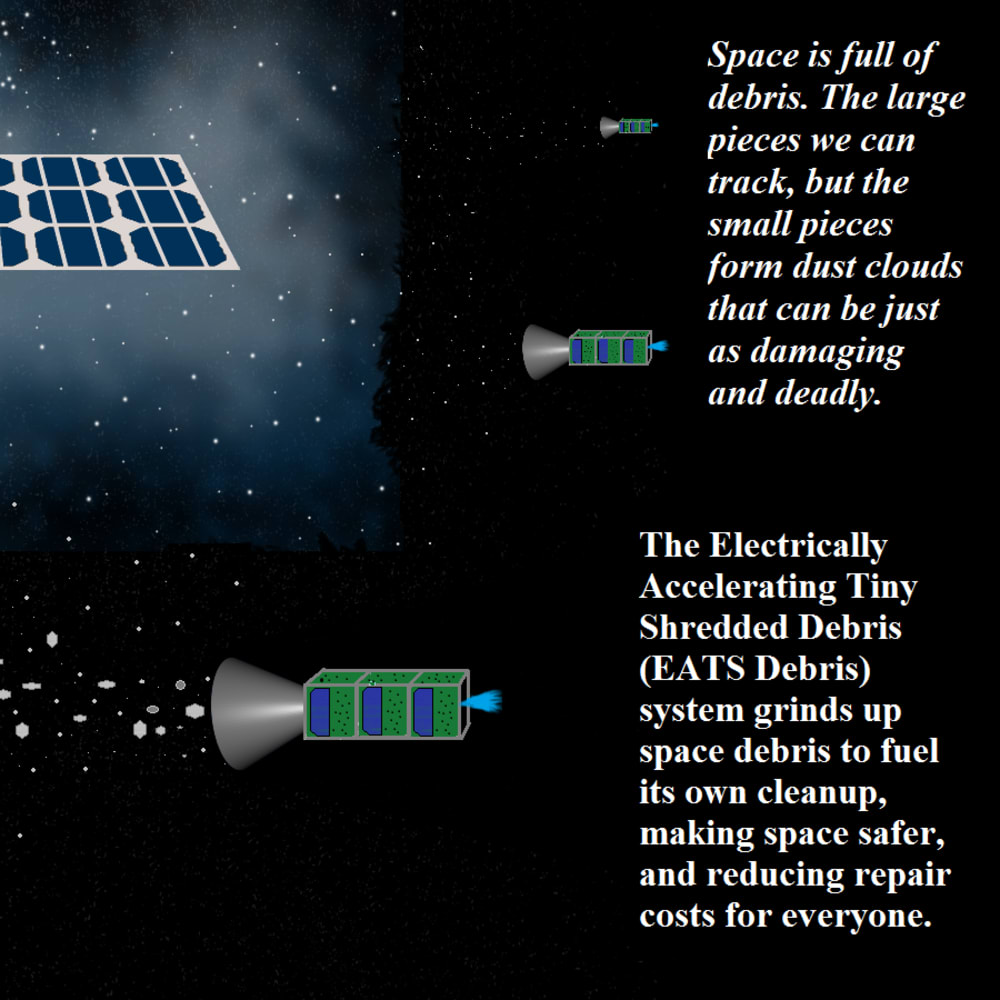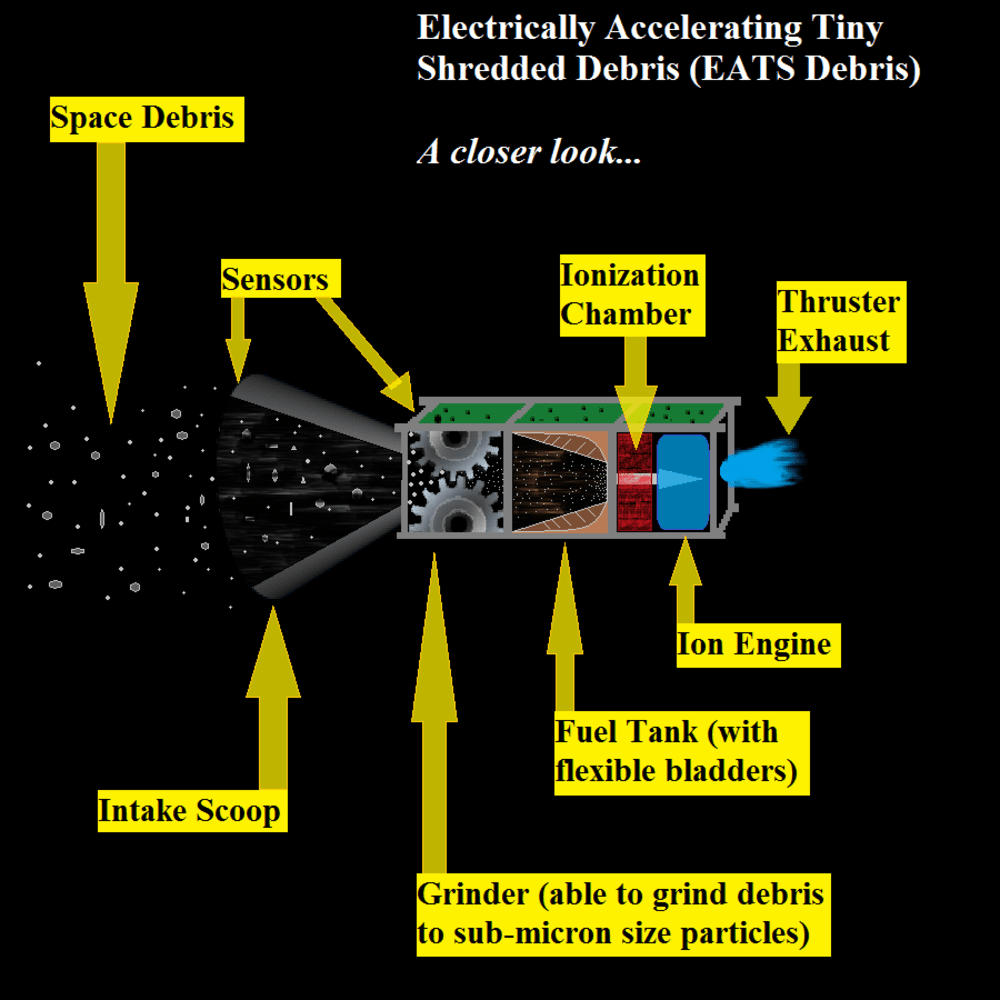Debris in orbit is a growing problem. Moving at roughly Mach 25, even a loose screw can inflict catastrophic damage if it collides with a small satellite, creating more debris that can impact other spacecraft. Efforts to deal with this have treated debris as trash, modeling it as a tragedy of the commons and thus greatly limiting potential sources of funding. We propose to treat it as an in-situ resource that can provide limitless fuel in orbit, until the day that orbital debris has been mostly cleaned up.
Our proposal is for a satellite with six main components (plus necessary subsystems, such as solar panels for power):
- Sensors to locate debris. The first model may have just a simple camera and short-range radar, to act as a teleoperated drone and find small (1-100 mm diameter) pieces of debris within 1 km in front of the drone. The drone is launched to the proximity of a cloud of debris (perhaps targeted by CubeCab’s Cab-3A), to get within 1 km in the first place.
- An intake scoop, hardened and slick to funnel debris into the grinder even if it is intercepted at a significant relative velocity. This deploys after launch to present a large surface area, hosting some sensors on its rim and transparent to other sensors behind it.
- A grinder, able to shred aluminum, ceramics, and other common spacecraft materials into sub-micron size particles. Even if these particles do not ionize properly, a micron-diameter particle has one trillionth the kinetic energy of a centimeter-diameter particle of the same composition and velocity. A cluster of these smaller particles impacting a spacecraft will spread out collisions and do much less damage – not to mention, many of the smaller particles will miss – akin to the difference between running into a fast-moving mist and running into a bullet.
- A fuel tank to hold the ground-up debris until it is time to use it as reaction mass. This may consist of multiple flexible bladders, to pressure feed the particles into the ionization chamber.
- An ionization chamber akin to a microwave oven, using variable wavelengths to heat different materials. For example, microwaves might heat small particles of aluminum but pass through most ceramics. This breaks the material down further. To handle mixed materials, a wavelength can be selected for the primary material, which can transfer heat via contact to any material not directly affected.
- An ion engine, similar to one of several available off the shelf, that accelerates these ions out the rear of the spacecraft. While the thrust produced will be small, it can be constant so long as the spacecraft keeps taking in sufficient debris.
An initial demonstration could be constructed as a 3U CubeSat, to keep the program budget to merely millions of dollars. Future versions might go to a depot and unload most of their fuel tanks, for separation and conversion into feedstock for on-orbit construction, before returning to debris fields to harvest further.
Like this entry?
-
About the Entrant
- Name:Adrian Tymes
- Type of entry:teamTeam members:Adrian Tymes, Sabrina Westerman
- Software used for this entry:N/A
- Patent status:none





